Q&A with Clark Nexsen’s Sustainability Leaders
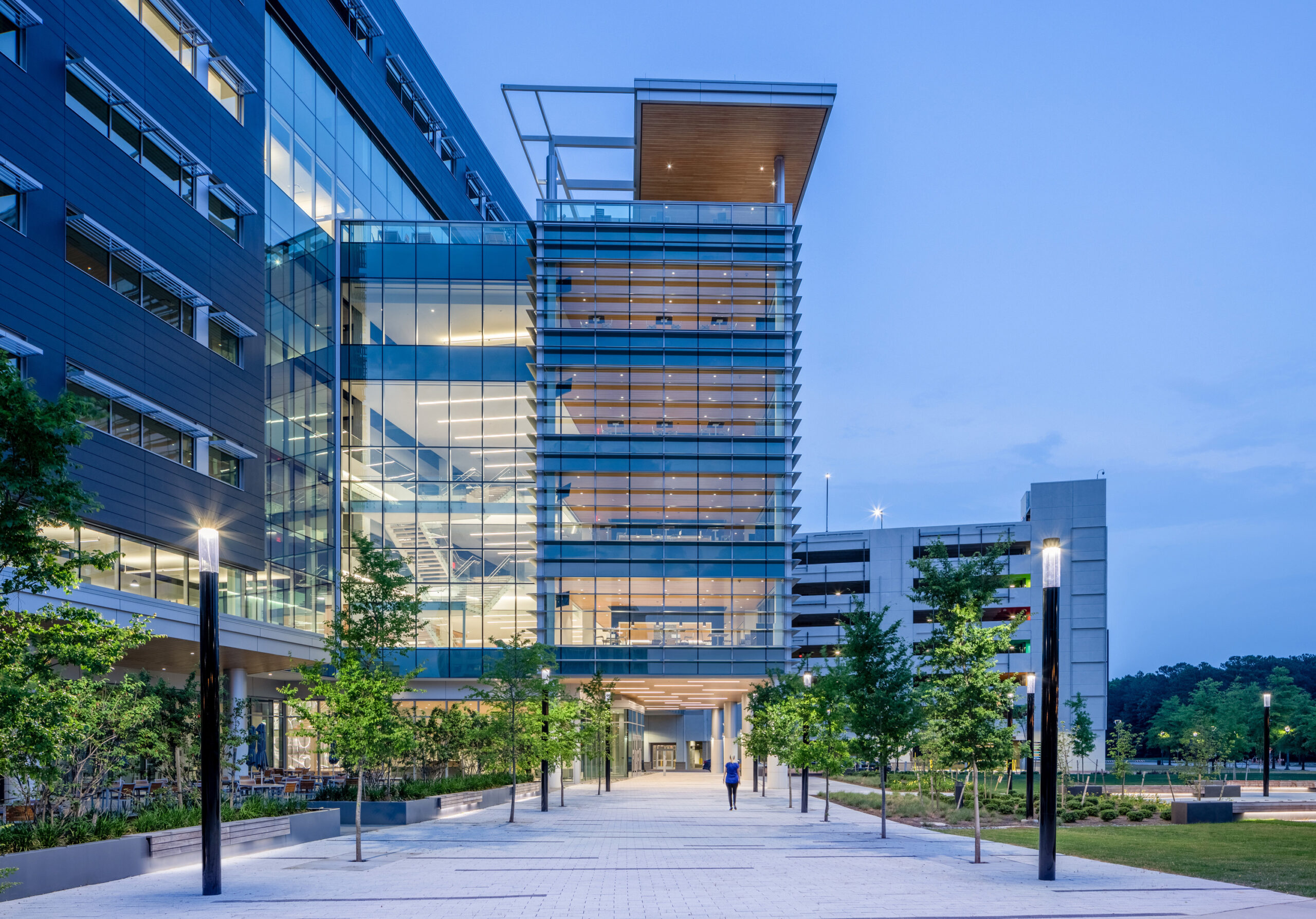
Clark Nexsen’s Adam Torrey, Brian Turner, and Stephen Wilson discuss their roles at the company, innovative projects and approaches, emerging technologies and building techniques, and how sustainable goals are changing the industry.
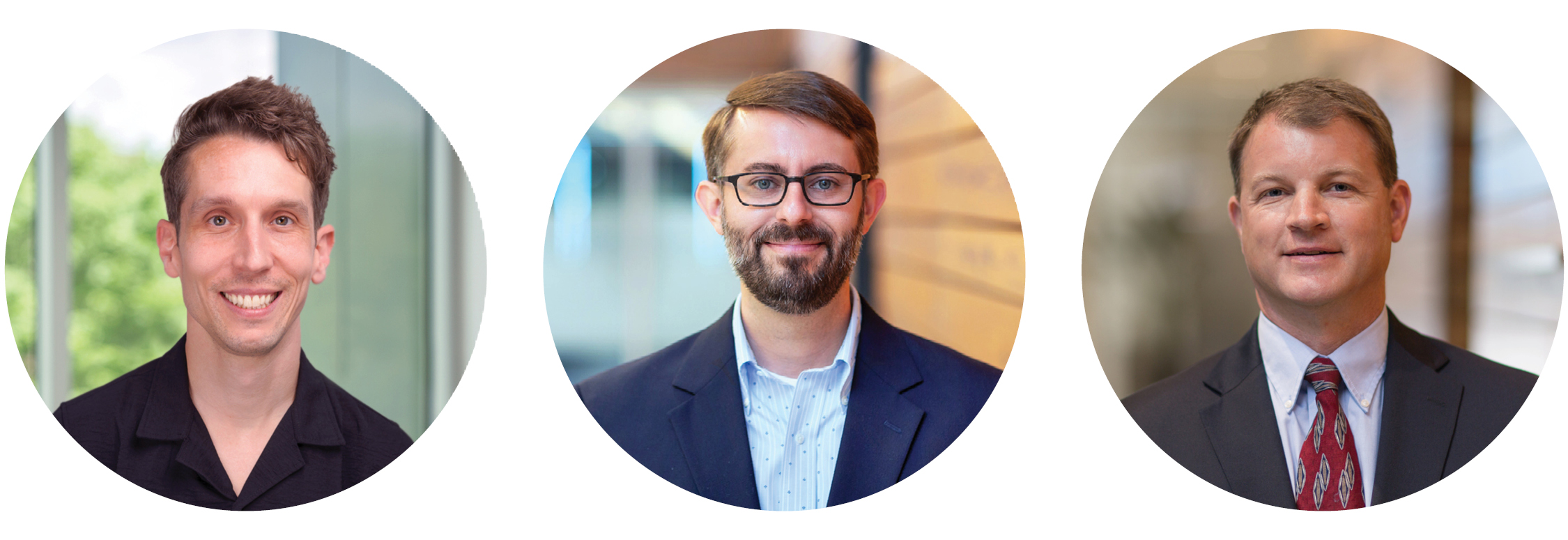
Clark Nexsen Sustanability Leaders from the left: Adam Torrey, Brian Turner, and Stephen Wilson.
Q: Could you describe your role or area of expertise in driving sustainability at Clark Nexsen and for our clients?
Adam: As sustainability leader, I see my role as providing a dedicated resource to collaborate with interdisciplinary teams and helping them identify and implement high-impact and project-specific sustainable design opportunities. The intent is to support and expand our teams' capabilities and ensure that the project goals deliver beautiful and high-performing projects. I’m passionate about working with project teams to find new and innovative ways to make progress toward achieving our firm’s carbon-neutrality commitments. Not only do we target energy and water efficiency, but we’re also taking into consideration embodied carbon, social equity, climate resiliency, and the whole scope of the integrative design process.
Brian: I’m leading the firm’s building science practice. In a nutshell, building science involves applying physics to simulate and understand how buildings perform. We use tools like energy modeling, daylight simulation, thermal bridging analysis, and more to help design teams make informed decisions about sustainability or performance. This helps our clients achieve sustainable outcomes and higher performance buildings. As practice leader, I’m working to make sure we’re using state-of-the-art tools and improving workflows so that we deliver maximum value to our clients.
Stephen: I’m the energy market leader for our firm, a position I’ve held in one form or another for over a decade. My role is to help our clients understand where and how they’re using energy. From that analysis, we can find ways to help clients manage their energy more efficiently and use new technologies to employ better energy consuming methodologies. Today, clients are measuring their return on investment in more than just financial terms and goals; they are measuring their ROI on the environmental benefits, local community impact, health and wellness outcomes, and long-term sustainability. Clark Nexsen has been doing this for a while now, so not only do we have a good track record, but we’re also perfectly positioned to help meet the needs of our clients and their projects.
Q: How do you see your roles intersecting and how does that help what we’re trying to do as a company and support our clients in achieving their sustainability goals?
B: Adam and I collaborate closely in partnering with our design teams. In addition to supporting sustainable project planning and implementation, Adam has building science skills, so he and I can support each other as needed. I think there’s also a handshake between single building facility design and supporting the energy consulting work that Steve is leading. We have the opportunity to provide additional insights to our clients that may make an impact across their portfolio.
S: I look at what we do on the energy sector side as introducing different options and ideas to the client. From there, we can start getting into the analysis, modeling, and other capabilities in the firm. That’s where I would rely on Adam and Brian to use the tools and techniques that we have at our disposal to make recommendations to our clients.
A: Sustainability is a broad umbrella and it’s invaluable to have Brian or Steve to bring their expertise into different aspects, such as campus planning, building certification, or the building science side of things. It’s great to have multiple people to collaborate with and deliver a high performing project.
S: I think over the years our roles for the three of us have come closer together and that intersection is growing daily because of the way the industry has gravitated towards sustainability. Like I said, clients used to look at return on investment as their litmus test, but nowadays, being sustainable is just as important.
B: That’s right. Our clients are increasingly asking about decarbonization or moving toward net zero carbon emissions. For our higher education, military, and municipal clients, decarbonization isn’t just building a single high-performance building, it’s also converting their vehicle fleet and developing a strategy to measure their progress toward net zero goals. Clark Nexsen can help with these areas, which makes us a strong partner for our clients.
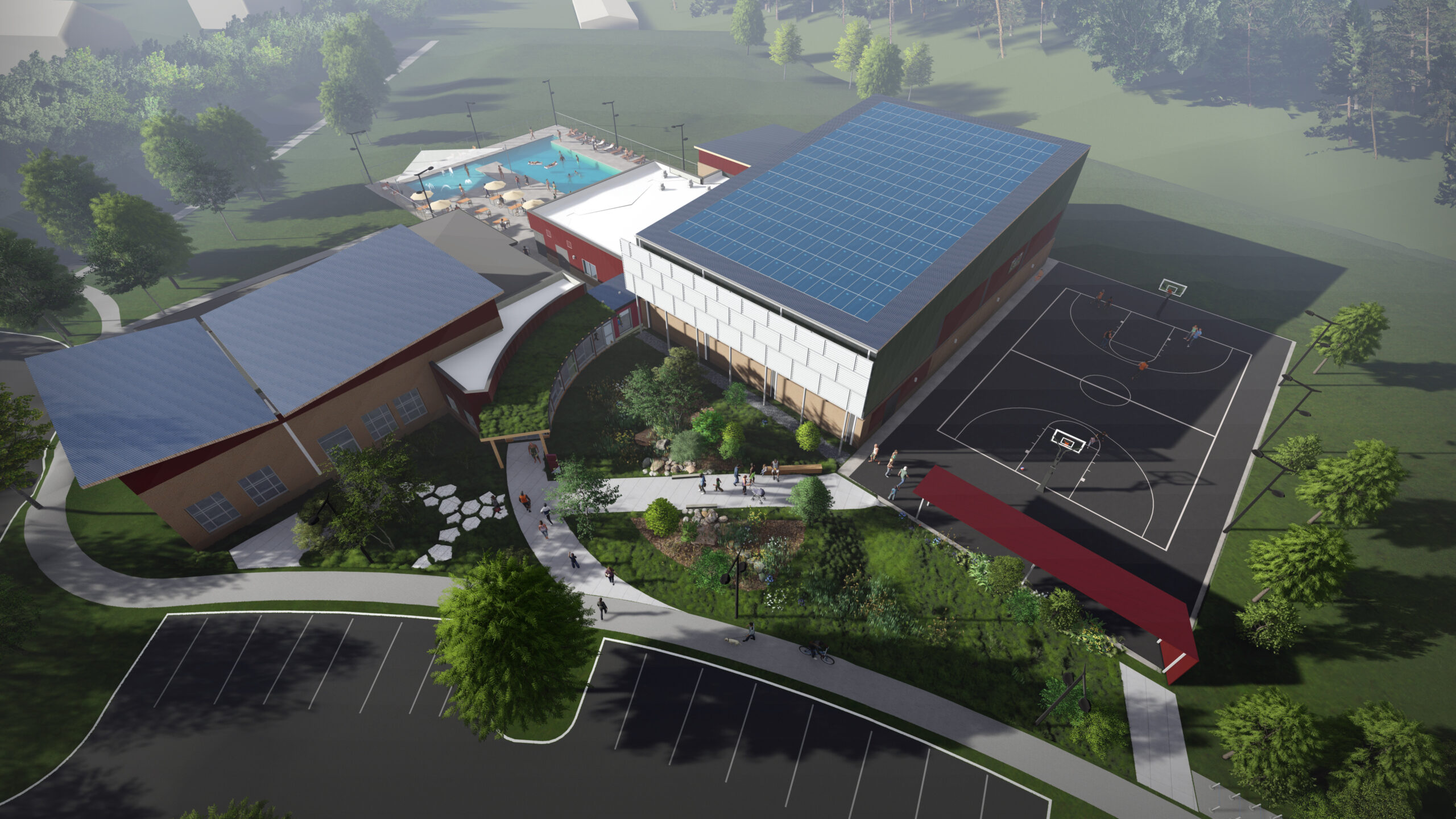
Clark Nexsen worked closely with the community and city of Asheville, NC to put sustainability front and center for the Dr. Wesley Grant Southside Community Center, creating a new bioswale entrance, using recycled materials, and placing a PV solar array on the roof.
Q: What are your goals or target outcomes for the firm in 5-10 years and beyond?
S: I don’t think you can measure our goals and outcomes by years. With technology changing so fast, we just need to stay in front of things. For example, in the energy sector, wind and solar energy predominated for so long. Now, it’s battery technologies, electric vehicle charging infrastructure, and the electrification of the world. So, while the landscape is rapidly evolving, one of my goals is to stay out in front of it all and make sure we’re educated so we can better serve our clients and make good decisions.
B: Another goal we have is to be recognized nationally for both our sustainable design excellence and our firm’s sustainable operations. It’s important to us to be good, caring citizens in our communities and practice what we preach.
A: Additionally, we must continue to foster the internal culture of sustainability. We’ve done a great job so far and that’s thanks to the existing talent, intention, and professional instincts within our firm. With Steve’s practice, establishing Brian as building science practice leader, and now me developing the sustainability leader position, I think it really shows Clark Nexsen’s dedication to and investment in sustainability, and it’s exciting to think about how the culture of the firm will continue to evolve as we move forward.
Q: Can you share a project example where we exceeded expectations in terms of sustainability or perhaps used an innovative approach to achieve a goal?
B: I’ll mention one: the Ferguson Enterprises Headquarters building. That building was recognized by GBI as a Green Globes project of the year, runner up. One of the innovative design elements is a thermal ice storage system, which helps reduce the building’s peak electric demand to off-peak hours. This reduces the building’s impact on the electric grid and saves the client money, resulting in a favorable life cycle cost payback. It’s a great example of thinking outside the box for an office building in southeast Virginia to have a better outcome for the planet, and for our clients financially.
S: Brian and I took part in a pro bono advisory panel with Woodbury Forest School, a private school not far from Richmond, VA. They had some goals – achieving net zero energy and carbon for the campus, as an example – but they didn’t know how to get there. The campus was interesting: not only was it where the students and faculty lived, they seldom left, so it had to be self-sustaining. Brought together through the Urban Land Institute, Brian and I collaborated with other thought leaders to help the client get started on a plan that could get them to net zero.
A: A recent one is the Wholeness Center at Mullberry Farm. It’s an exciting prospect because it’s going to be part of a completely net zero campus. It’s going to have therapeutic hot tubs, steam rooms, and other wellness facilities. Part of our process was reducing the building usage as much as possible and having that plug into the overall campus scheme, where it will leverage systems like geothermal loops and PV arrays that support the entire campus. Another example would be the Jackson County Aquatic Center. While the project didn’t have any LEED or certification requirements, we had a dedicated team setting intentional sustainability goals. We sourced regional materials to reduce the embodied carbon footprint, used heavy timber for the structural system, and included a rooftop PV array system. We were able to accomplish a lot due to the client being a great partner. We obviously had to justify the financial aspect of certain features, but if it was a good idea, they would go for it. It was a good team effort that led to a higher performing building than most.
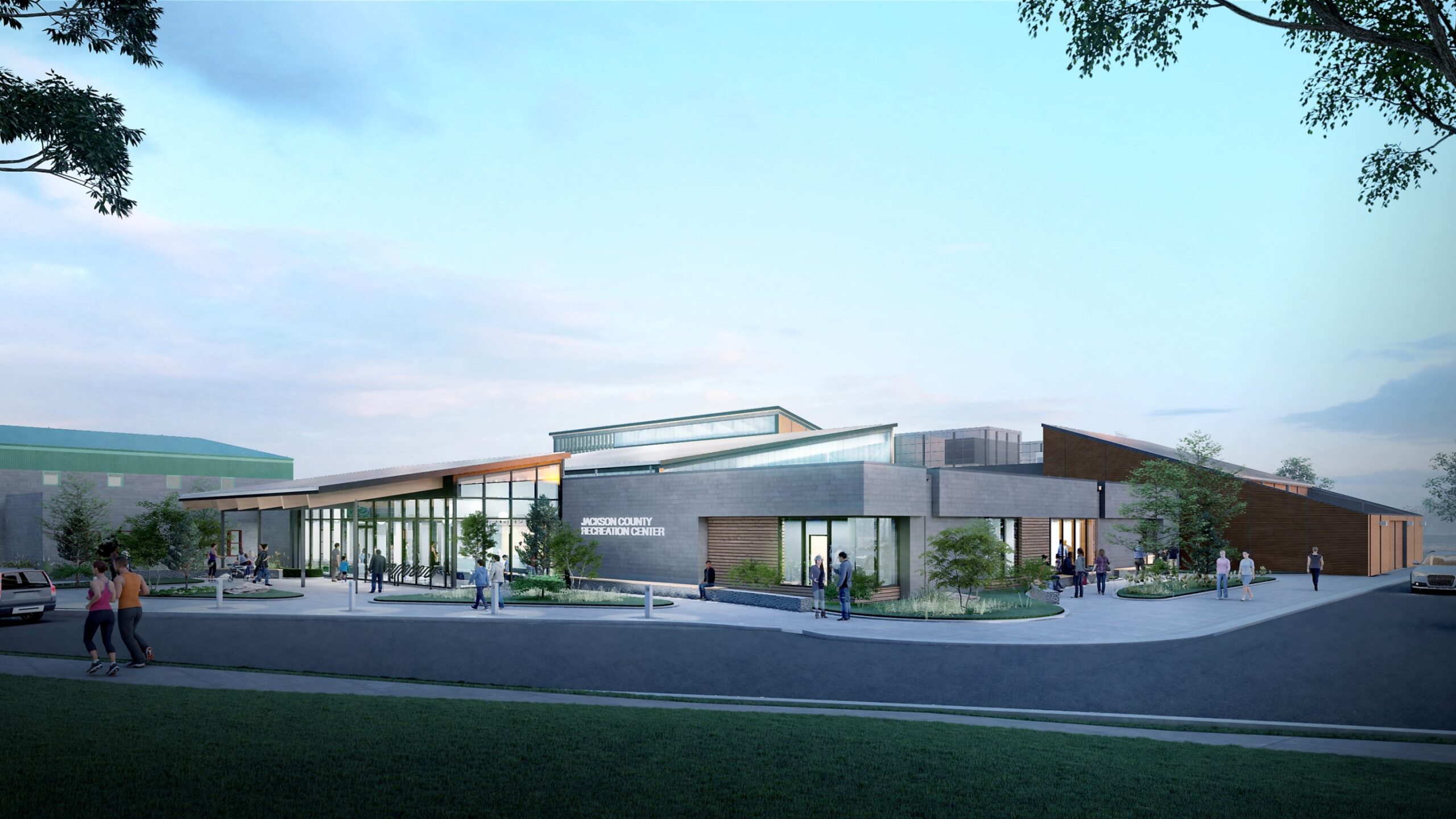
Despite not having any LEED or certification requirements, the Jackson County Aquatic Center will maintain a high level of sustainability with regionally sourced materials that reduce the building’s embodied footprint.
Q: Are there any emerging technologies, materials, or building techniques that we are already using or that you feel will either change the industry or change the way we do things?
A: It’s kind of funny to call it an emerging technology, but it’s worth mentioning: the use of mass timber. The rise and use of the wood structure again is exciting because it's such a carbon sink. Not only is it a very natural material, but it also doesn’t have the same embodied carbon footprint as concrete or steel. It can also add a regional quality to our projects. Trees from the forests of the southeast, as an example, can create a sense of connection to the surrounding environment. These are a few ways we’re trying implement timber in our projects and something we’re seeing the industry trend toward.
S: I’d say electric vehicles. We’re doing some projects right now for the federal government on electric vehicle charging infrastructure assessments. Essentially, we’re helping to develop design criteria that will be published on the Whole Building Design Guide (WBDG) website, which will lay out foundational starting points for designers to design charging infrastructure for vehicles. Looking down the road, there’s a plethora of technologies and strategies that will be employed on projects, such as vehicle-to-grid (V2G) and vehicle to everything (V2X) capabilities, demand management with vehicle charging, different battery technologies that are going into vehicles, and battery storage technologies to better manage power when you need it and when it’s not available from the grid. We’re going to see these technologies grow over the next decade because of federal goals to convert their vehicle fleets to 100% electric. So, it’s coming, and we have to stay in front of it.
B: We find that computational design is helping bring greater benefit to our design efforts. We collaborate with our practice technology group, which we call CNCPT, to develop tools and scripts to speed up or improve our analysis of design strategies. It’s amazing to be able to collaborate in-house on that. We have active efforts to develop custom tools that we hope to use with our design teams soon.
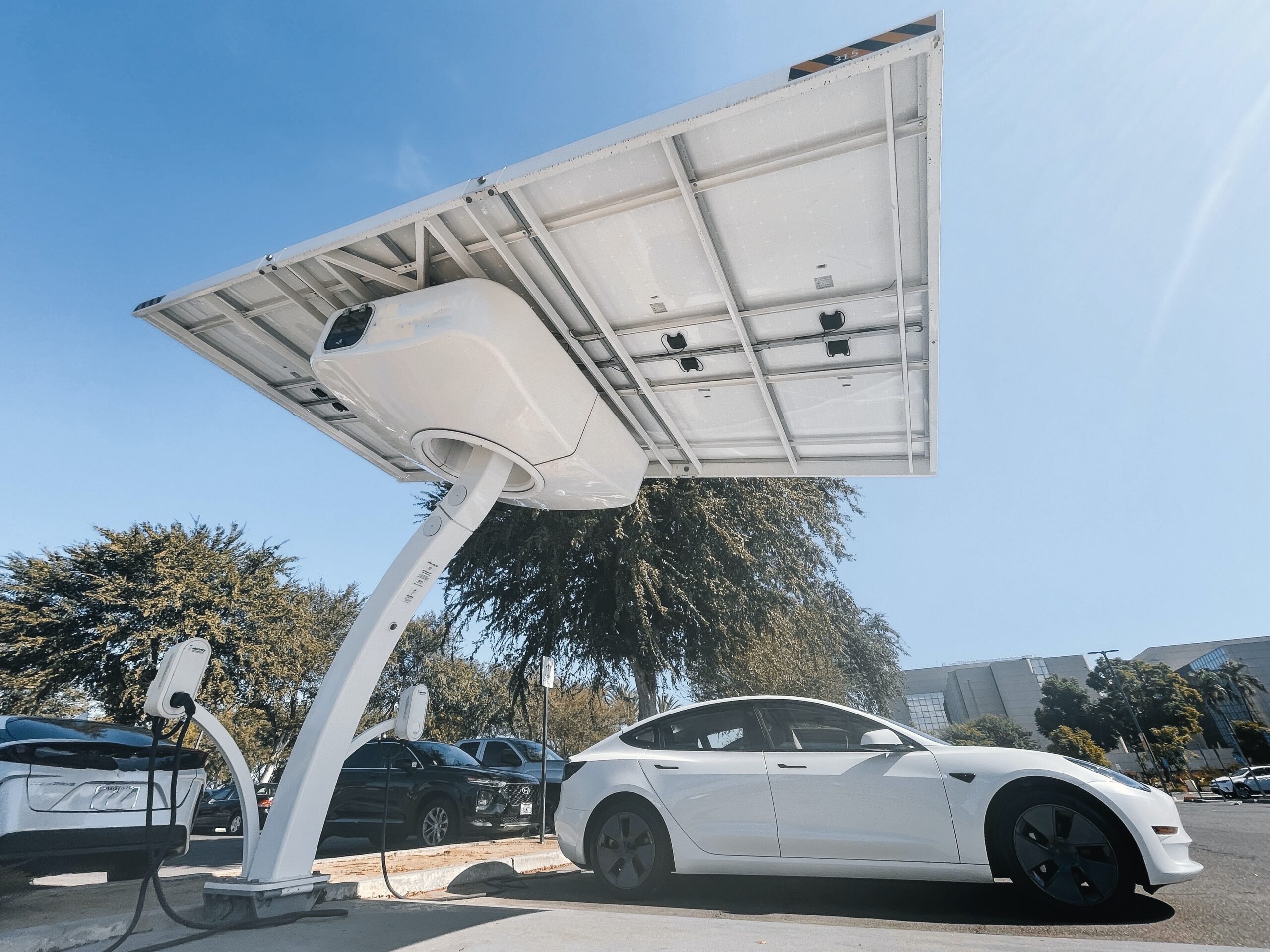
With more electric vehicles expected on the road over the next decade, charging infrastructure will become an increasingly important factor in projects.
Q: How does our design process enable us to address the many integrated areas of sustainability holistically; land, water impacts, energy efficiency, embodied and operational carbon, etc.?
A: One of the most public and obvious aspects of this is that we’re committed to all three of the major industry carbon reduction commitments: the AIA 2030 Challenge, the MEP 2040 Challenge, and the SE 2050 Challenge. Those all work together and it’s motivating to be one of the few firms out there that’s committed to all three. Clark Nexsen is in a unique position where we can collaborate amongst our different departments as we work towards these aggressive and important goals.
B: Now that we have dedicated team members to help with everything from sustainability, project planning, energy modeling, embodied carbon, and even looking at energy on the portfolio level, it’s easy for us to jump into a team meeting or hop on the phone and discuss how we can help and be nimble. We’re excited about leveraging all our resources and putting into practice our firm’s various industry commitments.
S: As an integrated and multidiscipline firm, it’s easy to say, for example, that electric vehicle charging is just an electrical issue. But it’s not. We’re finding out as we’re doing these projects that it starts with some electrical, but now you factor in civil, transportation, and other elements of design from a holistic approach to tackle those design challenges. The nice thing is we as a firm have that in-house, so we don’t have to go asking others for help. It’s great to be able to lean on our experts, practice leaders, and team members to get our types of projects done and have those types of conversations.
B: From the building side of things, Adam and I see a lot of benefits to having all our major design disciplines in-house. It gives us an opportunity to refine our processes and how we interact as architects, engineers, and designers. Because we have everyone in-house, it’s easy to work with the whole team, debrief, figure out what to do, how to optimize processes, and how to improve next time.
A: We’re all extremely excited about the future of sustainable design at Clark Nexsen. The firm has so many opportunities – both current and upcoming – that will deliver sustainable solutions for our clients, improve our communities, and protect the natural resources of our planet. I’m so fortunate to work with such amazing and talented people like Brian and Stephen and can’t wait to see what we do next.
Learn More Sustainable Design at Clark Nexsen